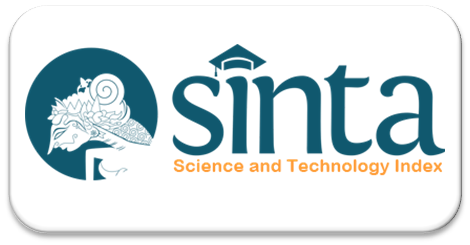Global Trend in Medication Safety Tools and Technologies: Scoping Review
DOI:
https://doi.org/10.35960/vm.v17i1.1321Keywords:
patient safety, medication error toolsAbstract
Background: Patient safety is a practice that focuses on preventing, reducing, and avoiding injuries that can occur to patients during medical care. One of the efforts is the safety and monitoring of drugs to ensure safety standards for patients. Medication errors are a significant patient safety problem and a critical indicator in assessing patient safety. The development of technology and informatics in nursing can help prevent medication errors. Objectives: To identify the tools used to address medication safety. Methods: Literature review using the PRISMA model approach. The analysis included articles from seven electronic databases published in the last five years. Results: 54 articles were collected and 15 relevant articles were selected. These studies are compiled from various countries and describe the tools used in implementing medication safety. Conclusion: The tools and technologies found can help medicinal programs and prevent errors in the care and administration of drugs in various hospitals worldwide.
References
Corny, J., Rajkumar, A., Martin, O., Dode, X., Lajonchère, J. P., Billuart, O., Bézie, Y., & Buronfosse, A. (2020). A machine learning-based clinical decision support system to identify prescriptions with a high risk of medication error. Journal of the American Medical Informatics Association, 27(11), 1688–1694. https://doi.org/10.1093/jamia/ocaa154
Dabliz, R., Poon, S. K., Fairbrother, G., Ritchie, A., Soo, G., Burke, R., Kol, M., Ho, R., Thai, L., Laurens, J., Ledesma, S., Abu Sardaneh, A., Leung, T., Hincapie, A. L., & Penm, J. (2021). Medication safety improvements during care transitions in an Australian intensive care unit following implementation of an electronic medication management system. International Journal of Medical Informatics, 145(October 2020), 104325. https://doi.org/10.1016/j.ijmedinf.2020.104325
Donsu YC, Tjitrosantoso H, Bodhi W. (2016). Faktor Penyebab Medication Error Pada Pelayanan Kefarmasian Rawat Inap Bangsal Anak RSUP Prof. DR. R.D. Kandou Manado. UNSRAT. 5(3):2302 – 2493. https://doi.org/10.1016/j.ijmedinf.2020.104325
Gleeson, L. L., Ludlow, A., Wallace, E., Argent, R., Collins, C., Clyne, B., Mellon, L., Barlow, J. W., Ryan, B., De Brún, A., Holton, A., Pate, M., Kirke, C., Flood, M., & Moriarty, F. (2022). Changes to primary care delivery during the COVID-19 pandemic and perceived impact on medication safety: A survey study. Exploratory Research in Clinical and Social Pharmacy, 6(February). https://doi.org/10.1016/j.rcsop.2022.100143
Hines, S., Kynoch, K., & Khalil, H. (2018). Effectiveness of interventions to prevent medication errors: an umbrella systematic review protocol. JBI Database of Systematic Reviews and Implementation Reports, 16(2), 291–296. https://doi.org/10.11124/JBISRIR-2017-003481
Janmano, P., Chaichanawirote, U., & Kongkaew, C. (2018). Analysis of medication consultation networks and reporting medication errors: A mixed methods study. BMC Health Services Research, 18(1), 1–7. https://doi.org/10.1186/s12913-018-3049-2
Liao, C. Y., Wu, M. F., Poon, S. K., Liu, Y. M., Chen, H. C., Wu, C. L., Sheu, W. H. H., & Liou, W. S. (2019). Improving medication safety by cloud technology: Progression and value-added applications in Taiwan. International Journal of Medical Informatics, 126(September 2018), 65–71. https://doi.org/10.1016/j.ijmedinf.2019.03.012
Liu, Y., Yan, J., Xie, Y., & Bian, Y. (2020). Establishment of a pediatric trigger tool based on Global Trigger Tool to identify adverse drug events of children: Experience in a Chinese hospital. BMC Pediatrics, 20(1), 1–10. https://doi.org/10.1016/j.ijmedinf.2020.104325
Maalangen T, Citraningtyas G, Wiyono WI. (2019). Identifikasi Medication Error Pada Resep Pasien Poli Interna Di Instalasi Farmasi Rumah Sakit Bhayangkara Tk. III Manado. Pharmacon– Progr Stud Farm FMIPA, Univ Sam Ratulangi. https://doi.org/10.1016/j.ijmedinf.2020.104325
NCCMERP. (2020). What is a Medication Error? Retrieved from National Coordinating Council for Medication Error Reporting and Prevention website: https://doi.org/10.1016/j.ijmedinf.2020.104325
Olfah Y, Ghofur A. (2016). Dokumentasi Keperawatan. Jakarta: Pusat Pendidikan SDM Kesehatan.
PERMENKES NO 11. (2017). Tentang Keselamatan Pasien. PMK No. 11 Tahun 2017 Tentang Keselamatan Pasien, 14(7), 450.
Pons-Mesquida, M. À., Oms-Arias, M., Diogène-Fadini, E., & Figueras, A. (2021). Safer prescription of drugs: impact of the PREFASEG system to aid clinical decision-making in primary care in Catalonia. BMC Medical Informatics and Decision Making, 21(1), 1–14. https://doi.org/10.1186/s12911-021-01710-8
Qin, N., Duan, Y., Shi, S., Li, X., Liu, H., Zheng, F., Zhong, Z., & Xiang, G. (2023). Development and psychometric assessment of self-reported patient medication safety scale (SR-PMSS). Therapeutic Advances in Drug Safety, 14, 1–15. https://doi.org/10.1016/j.ijmedinf.2020.104325
Republik Indonesia. (2009). Undang-Undang Republik Indonesia Nomor 36 Tahun 2009 Tentang Kesehatan. Jakarta: Sekretariat Negara. https://doi.org/10.1016/j.ijmedinf.2020.104325
Russmann, S., Martinelli, F., Jakobs, F., Pannu, M., Niedrig, D. F., Burden, A. M., Kleber, M., & Béchir, M. (2023). Identification of Medication Prescription Errors and Factors of Clinical Relevance in 314 Hospitalized Patients for Improved Multidimensional Clinical Decision Support Algorithms. Journal of Clinical Medicine, 12(15). https://doi.org/10.3390/jcm12154920
Sandbæk, A., Møller, M. C. R., Bro, F., Høj, K., Due Christensen, L., & Mygind, A. (2022). Involving patients in medicines optimisation in general practice: a development study of the “PREparing Patients for Active Involvement in medication Review”(PREPAIR) tool. BMC primary care, 23(1), 122.
Scanning, B., Subregion, G. M., Journal, M., Sriboonruang, P., Rattanamahattana, M., & Pharmacy, A. (2023). Special Article GMSMJ. 3(1), 7–12.
Sriboonruang, P., Rattanamahattana, M., & Pharmacy, A. (2023). Barcode Scanning Technology to Improve Pre-dispensing Errors. Greater Mekong Subregion Medical Journal, 3(1), 7–12.
Stovold, E., Beecher, D., Foxlee, R., & Noel-Storr, A. (2014). Study flow diagrams in Cochrane systematic review updates: an adapted PRISMA flow diagram. Systematic Reviews, 3, 1–5.
Tampubolon, L. and Pujiyanto (2018) ‘Analisis Penerapan Prinsip Keselamatan Pasien Dalam Pemberian Obat Terhadap Terjadinya Medication Error di Rawat Inap Rumah Sakit X Tahun 2018’, Jurnal Administrasi Rumah Sakit Indonesia, 4(3), pp. 173–183. Available at: https://doi.org/10.1016/j.ijmedinf.2020.104325.
Trakulsunti, Y., Antony, J., Dempsey, M., & Brennan, A. (2021). Reducing medication errors using lean six sigma methodology in a Thai hospital: an action research study. International Journal of Quality and Reliability Management, 38(1), 339–362. https://doi.org/10.1108/IJQRM-10-2019-0334
Vaghasiya, M. R., Poon, S. K., Gunja, N., & Penm, J. (2023). The Impact of an Electronic Medication Management System on Medication Deviations on Admission and Discharge from Hospital. International Journal of Environmental Research and Public Health, 20(3). https://doi.org/10.3390/ijerph20031879
Valkonen, V., Haatainen, K., Saano, S., & Tiihonen, M. (2023). Evaluation of Global trigger tool as a medication safety tool for adverse drug event detection—a cross-sectional study in a tertiary hospital. European Journal of Clinical Pharmacology, 79(5), 617–625. https://doi.org/10.1007/s00228-023-03469-5
Wimmer, S., Toni, I., Botzenhardt, S., Trollmann, R., Rascher, W., & Neubert, A. (2023). Impact of a computerized physician order entry system on medication safety in pediatrics-The AVOID study. Pharmacology Research & Perspectives, 11(3), e01092. https://doi.org/10.1002/prp2.1092
Woo, S. A., Cragg, A., Wickham, M. E., Villanyi, D., Scheuermeyer, F., Hau, J. P., & Hohl, C. M. (2020). Preventable adverse drug events: Descriptive epidemiology. British Journal of Clinical Pharmacology, 86(2), 291–302. https://doi.org/10.1111/bcp.14139
Downloads
Published
How to Cite
Issue
Section
License
Copyright (c) 2024 Sri Ayu Candra A Misali, Humairatun Zakiyah, Afrianti Pakalessy, Sabrina Rahmatillah Azhar, Alrega Widya Nerienecta, Arum Aripurnami, Ariani Arista Putri Pertiwi, Ayu Anita

This work is licensed under a Creative Commons Attribution 4.0 International License.
Submitted paper will be firstly reviewed by the editors to determine whether the paper meet the edition theme and submission guidelines. Papers which meet the theme and the guidelines will be assigned to selected reviewers for peer-reviews. Viva Medika: Jurnal Kesehatan, Kebidanan dan Keperawatan is a double blind peer-reviewed journal which involves reviewers based on their experties relevant to the topic of the paper. Final decision of paper acceptance is solely decided by the editors according to reviewers' comment.
Plagiarism and self-plagiarism are prohibited. Viva Medika: Jurnal Kesehatan, Kebidanan dan Keperawatan uses PlagiarismCheckerX and iThenticate to scan papers for detecting plagiarism. Thus, Appropriate citation and quotation should be used

.png)








